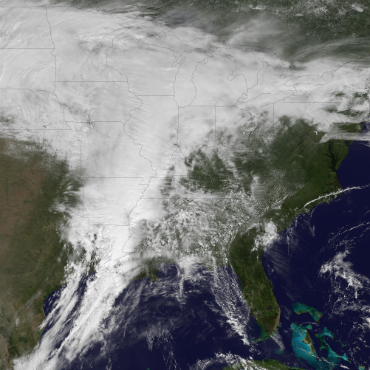Four instruments for next-gen weather satellite finished
The Solar Ultraviolet Imager is one of four space-weather instruments that will be aboard NOAA’S GOES-R satellite.

The National Oceanic and Atmospheric Administration received an early gift this Christmas with news that the fourth major space weather instrument designed for its next-generational weather satellite is ready for integration to the spacecraft.
The Solar Ultraviolet Imager (SUVI) was built by Lockheed Martin at its Advanced Technology Center in Palo Alto, Calif. It will be shipped in early 2014 to a sister Lockheed Martin facility in Littleton, Colo., for installation on the Geostationary Operational Environmental Satellite (GOES-R).
When launched in early 2016, the satellite will produce more data than any before it. SUVI is a high-powered telescope that will observe the sun, monitoring for flares and other solar activity that could affect Earth. Data produced by SUVI will enable NOAA’s Space Weather Prediction Center to provide better and earlier warnings to electric power companies, telecoms and satellite operators in the event of dangerous activity on the sun.
SUVI is one of four space-weather instruments that will be aboard GOES-R. Two of the others -- the Space Environment In-Situ Suite and the Extreme X-Ray Irradiance Sensor -- are complete and ready for integration to the satellite. One more space-weather instrument, the Magnetometer, which will provide measurements of the Earth’s magnetic field, is still under construction.
Two other instruments will also accompany GOES-R upon launch. The Advanced Baseline Imager is ready for integration, while the Geostationary Lightning Mapper is still under development by Lockheed Martin.
The instruments’ capabilities include:
- Geostationary Lightning Mapper, which will provide for the first time a continuous surveillance of total lightning over the western hemisphere from space.
- The Space Environment In-Situ Suite consists of sensors that will monitor radiation hazards that can affect satellites and communications for commercial airline flights over the poles.
- The Solar Ultraviolet Imager is a high-powered telescope that observes the sun, monitoring for solar flares and other solar activity that could affect Earth.
- The Magnetometer will provide measurements of the space environment magnetic field that controls charged particle dynamics in the outer region of the magnetosphere. These particles can be dangerous to spacecraft and human spaceflight.
- Advanced Baseline Imager is GOES-R’s primary instrument for scanning the planet’s weather, oceans and environment, offering faster imaging at higher resolutions than current space-based technology. The instrument also offers NOAA new forecast products for severe weather, volcanic ash advisories, fire, smoke monitoring and other types of hazards.
- Extreme X-Ray Irradiance Sensor (EXIS) will monitor solar behavior and alert ground crews of solar storms.






